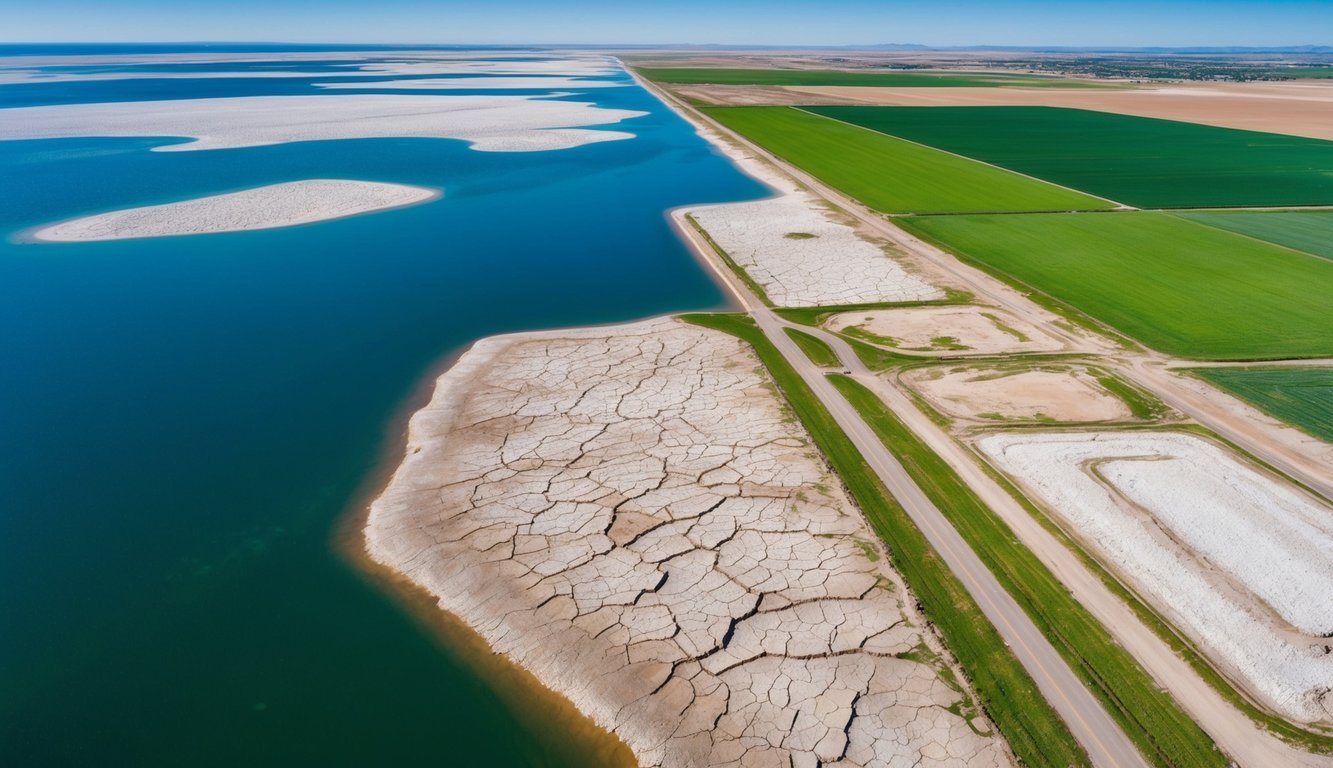
For the past three decades, the Great Salt Lake has faced a severe crisis, losing over 15 billion cubic yards of water.
Each year, its depth shrinks by about 4 inches, a concerning trend that calls for urgent action.
A recent evaluation of the lake’s water budget has highlighted that reducing irrigation practices is essential to combat this dwindling resource.
Significant Water Diversion
In a study released today in Environmental Challenges, researchers revealed a staggering statistic: a significant 62% of the river water that should flow into the lake is diverted for human use, with agriculture responsible for around 75% of this diversion.
William Ripple, a noted ecology professor at Oregon State University and one of the co-authors of the study, points out that livestock irrigation plays a pivotal role in this excessive depletion.
Irrigation of alfalfa and hay alone claims about 80% of agricultural water resources, stressing the need for reform.
To help stabilize and restore the Great Salt Lake, the researchers suggest a 35% reduction in overall water consumption throughout the watershed.
Their plan includes drastic reductions in alfalfa irrigation, allowing many hay fields to lie fallow, and providing financial support to farmers and ranchers whose livelihoods may be affected by these necessary changes.
Ecological and Economic Impacts
Ripple emphasizes the lake’s vast ecological, economic, cultural, and spiritual significance, cautioning that these vital aspects of the region are at risk due to the lake’s alarming decline in recent years.
Utilizing data from the Utah Division of Water Resources, the study developed a comprehensive water budget for the Great Salt Lake basin, analyzing data from 1989 to 2022.
Over these years, the inflow of water from rivers and precipitation has consistently failed to meet consumption and evaporation rates, resulting in an average annual deficit of 500 million cubic yards.
For much of the last century, the water budget has remained in the red, with the situation escalating due to climate change and ongoing drought conditions.
Ripple notes that while heavy snowmelt in the 1980s and 1990s temporarily obscured the long-term decline, the lake peaked at its highest level in over a century in 1987, and since then, it has fallen by around 4 inches each year.
As the largest saline lake in the Western Hemisphere and the eighth largest in the world, the Great Salt Lake stretches over a drainage area of 21,000 square miles, primarily fed by snow from the Wasatch Mountains.
Its ecosystem is crucial for more than 10 million migratory birds and 350 different species.
If water levels continue to drop, the habitats for these species may be jeopardized, disrupting essential local food webs.
Health Risks and Conservation Measures
The lake is also a significant economic asset, supporting around 9,000 jobs and generating approximately $2.5 billion in economic activities linked to recreation, mining, and the harvesting of brine shrimp.
However, as the lake shrinks and its salinity increases, the production of brine shrimp—which is vital for global aquaculture—also declines due to stress on the shrimp population.
Moreover, a shrinking lake presents escalating health risks.
Dust from the exposed saline lakebed can contain fine particulate matter that poses dangers to respiratory health.
The legacy of toxic heavy metals from past mining and refining operations adds to the concern.
The authors propose several conservation measures, including changing crop types, cutting back on municipal and industrial water usage, and leasing water rights from farmers.
Financial compensation for affected farmers and ranchers could range from $29 to $124 per Utah resident each year, given the state’s population of 3.4 million.
Although revenues from irrigated alfalfa and grass hay account for less than 0.1% of Utah’s gross domestic product, implementing these strategies may demand major lifestyle adjustments from approximately 20,000 farmers and ranchers in the basin.
The plight of the Great Salt Lake exemplifies the socio-cultural challenges faced by river basin communities across the western United States and beyond, particularly as water availability shifts due to climate change.
Ripple asserts that while the necessary economic and cultural adjustments may seem substantial, they are achievable with the right policies and community support.
This can pave the way for a sustainable future for the Great Salt Lake and serve as a model for addressing global water scarcity challenges.
The research team that contributed to this analysis includes experts from Northern Arizona University, Utah State University, Virginia Tech, the Utah Agricultural Experiment Station, and Sustainable Waters, a nonprofit focused on water education based in New Mexico.
Funding for this important study was provided by the National Science Foundation and the Utah Agricultural Experiment Station.
Source: ScienceDaily

